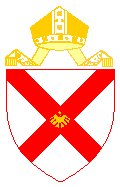Document Contents
Rochester is a ‘new foundation’ cathedral. Until 1082 it was served by a college of secular canons, but in that year these were replaced by Benedictine monks, who remained in possession until in turn expelled at the Reformation. The monastic establishment was disbanded in 1540, and a new cathedral body was established in the foundation charter of 18 June 1541, statutes being issued in 1544.
The clerical component of the cathedral body described in the statutes consisted of a dean and six canons, assisted by six minor canons (including precentor and sacrist), an epistoller and a gospeller (who had disappeared by the 1590s). Each year three canons were chosen vice dean, receiver and treasurer. The six prebends were in the royal gift, although Mary I granted presentation to Bishop Maurice Griffith for his lifetime, which he exercised on only one occasion.
The six prebends were not given names, and attempts to assign successions thus depend to an extent on the possession of canonical houses (see horn1974, 45–6). In 1637 the sixth prebend was annexed to the archdeaconry of Rochester; in 1713 the fifth prebend was annexed to the Provostship of Oriel College, Oxford. Otherwise the structure of the chapter remained unaltered until the reforms of the Ecclesiastical Commission enacted in 3 & 4 Vict. c. 113 (1840).
It is not known precisely how the chapter was dispersed in the 1640s, and none of those deprived in the 1640s returned at the Restoration, when the chapter was doing business before the end of August 1660.






Patronage
In 1831 as recorded by the Ecclesiastical Commissioners the dean and chapter of Rochester had several livings in their gift in the diocese of Rochester: Allhallows, Aylesford, Chatham, Darenth, West Farleigh, Halling, Hoo, Kingsdown with Mappiscombe, Lamberhurst, West Peckham, Shorne, Strood, Sutton at Hone, Wateringbury and Wilmington (thus well over 10 per cent of the total of diocesan benefices). But they had almost as many beyond the diocese, especially in Canterbury (Ashford, Bersted, Boughton Monchelsea, Boxley, Chart nr Sutton, Goudhurst, Hartlip, Rolvenden, Stockbury, Sutton Valence and Woodnesborough), as well as a few further afield: Haddenham with Cuddington, and Kingsey (Lincoln), and Leatherhead (Winchester). A good introduction to the use they made of this patronage is provided in muss1996. None of the livings was especially well-endowed.
The Cathedral and Education
When the cathedral was refounded at the Reformation a school (the King’s School) became part of the collegiate body, with at first the dean, and later canons nominating the twenty scholars, who benefited from preferential advancement at Christ Church, Oxford. By the later sixteenth century the two masters specified in the Henrician statutes, the head and an usher, were accorded precedence above the minor canons.
